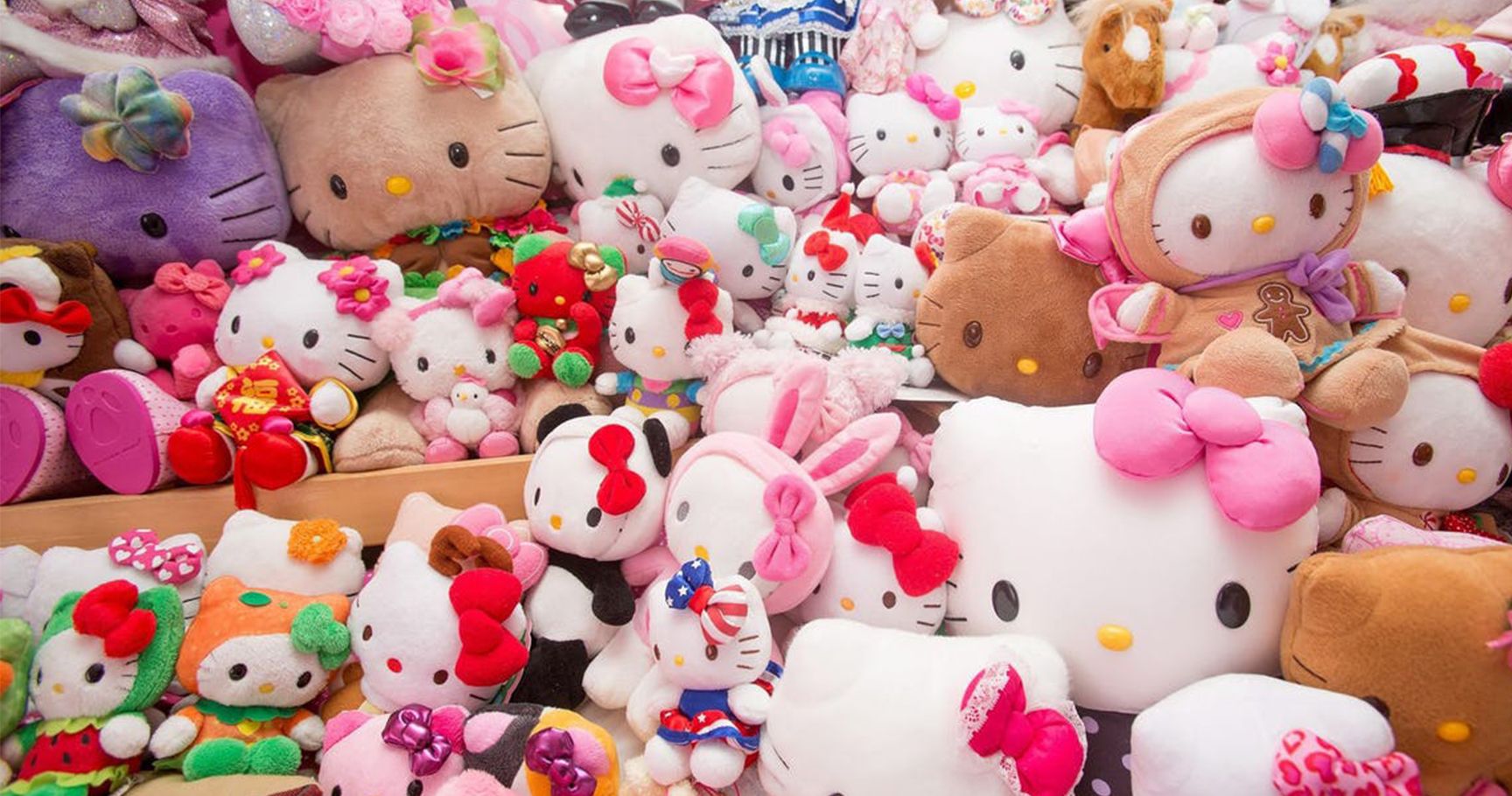
The mystery surrounding Hello Kitty's lack of mouth. Sanrio's motto is social communication and therefore they chose to the word 'hello' even though they were thinking of calling her 'hi kitty' for a while!Īlthough their faces look identical, Charmmy Kitty walks on all fours unlike has Hello Kitty and doesn't wear any clothes. An interesting fact is that Hello Kitty actually owns her own pet called Charmmy Kitty, therefore several people have argued that Hello Kitty is actually a girl who looks like a cat.
#HELLO KITTY FULL#
The US was also a popular interest among Japanese people, but since they wanted Hello Kitty to be unique she was made British and her actual full name is Kitty White! In the story Kitty lives in London together with her twin sister Mimmy and her parents George and Mary. She was created in Japan but designed to be British because Japanese people were obsessed with foreign countries at that time. You can find anything Hello Kitty these days, from stationary and plushies, to suitcases and toasters!Įven though Hello Kitty looks like a cat, she is actually a little girl. In the beginning, Hello Kitty goods were made for a younger crowd but as she became more popular new products for teenagers and adults were released as well.
--Hello_Kitty_Image001.jpg)
Hello Kitty's first appearance in the United States was made only two years later in 1976 and some became a worldwide phenomenon! She was now the icon for Japanese pop culture and her worth increased from $6 billion in 2010 to $42 billion in 2018. The Hello Kitty original coin purse featuring Hello Kitty, a bottle of milk and a fish in a bowl! One of these cartoonists was Yuko Shimizu who designed Hello Kitty, and the first item ever produced was a coin purse which was released in 1974! The first items he created were rubber sandals with flowers printed on them, he noticed that the cuter his items were, the more popular! Therefore he decided to hire cartoonists to design cute characters for his merchandise. Sanrio was founded in 1962 by Shintaro Tsuji, he was of the first people to discover the appeal of kawaii. But aside from the fact that Hello Kitty is cute, there are some things about her that many people don't know about her! Goutokuji still exists, housing dozens of statues of the Beckoning Cat.Together with Pokemon's Pikachu, it's with no doubt that Hello Kitty is one of the most well-known Japanese characters in the world! She has won over the hearts of younger and older girls (and boys) since Sanrio started producing Hello Kitty themed goods in 1974. After a long life, Tama was buried in gratitude at the Goutokuji temple. Tama and the priest never went hungry again.

Tama had saved his life! In gratitude, Naotaka made the little temple his family temple and became it's benefactor. Suddenly, the tree was struck by lightening and fell on the exact spot where the lord had just been standing. Intrigued, Naotaka decided to get a closer look at he cat. As the lord took refuge under a big tree, he noticed Tama with her paw raised, beckoning to him, inviting him to nter he temple's front gate. Then one day, a powerful feudal lord named Naotaka Ii was caught in a rainstorm near the temple while returning home from a fishing trip. The temple priest often scolded Tama for contributing nothing to the upkeep of the temple.

Department of Homeland Security for immediate liquidation.Īccording to legend, that cat, called Tama, lived in a poverty stricken temple in 17th century Tokyo. Anyone who accidently catches sight of this Kitty (an anthropomorphic cat having a hairbow and no mouth) is advised to seek psychotherapy at once and to report the sighting to the U.S. Doctors warn that even low-level exposure to Hello Kitty may cause a perfectly sound mind to crack. With proof of the Kitty's efficacy, the Japanese have subsequently deployed even more potent mind-control weapons, including Pokemon and Dragonball Z. Furthermore, they sap the economies of the Western nations by purchasing boundless amounts of worthless Japanese kitsch. Nobody knows how Hello Kitty works, but there is no denying the tragic consequences of its use: millions of fad-crazed zombies (the "Wapanese") now trod the earth, their rational faculties obliterated by an overpowering instinct to embrace Japanese pop culture. A Japanese psychological mass-casualty weapon, developed by scientists at the Sanrio Corporation unleashed upon humanity in 1974 with the goal of subjugating the planet under Japanese imperial rule.


 0 kommentar(er)
0 kommentar(er)
